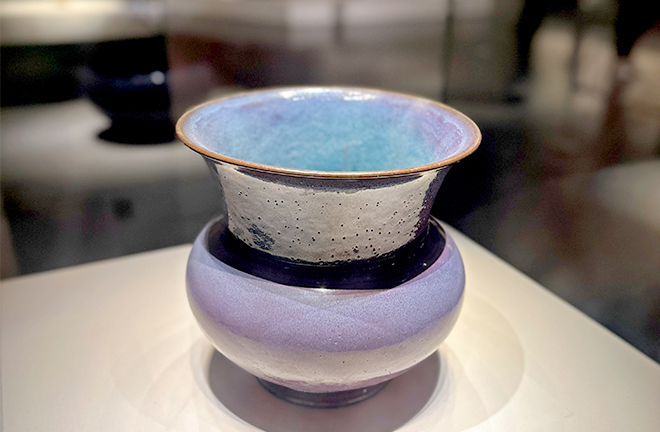Song Dynasty porcelain

A rose-violet-glazed pot of the Jun ware from the Song Dynasty Photo: Ren Guanhong/CSST
The ceramics of the Song Dynasty (960–1279) are particularly renowned for their exquisite light-colored, subtly-hued glazes and their emphasis on the beauty of simplicity. These wares constitute perhaps the foremost expression of ceramic art in China. During the Song era, the porcelain industry flourished to an unprecedented degree. Famous kilns emerged across the country. Ancient kiln sites have been discovered across 170 counties throughout China. Among the principal varieties of Song ceramics are Ru, Guan, Ge, Ding, and Jun, representing five famous kilns that were held in particularly high esteem at that time.
Ru ware, an extremely rare type, was mainly produced for the imperial court. It is distinguished by its celadon-colored glaze, reminiscent of the sky after rainfall, where the clouds part to reveal the sky itself. Guan ware, also reserved for imperial use, features a range of glaze colors from pale green to lavender blue. Described in Chinese texts as having “a purple mouth and an iron foot,” Guan ware features purple-gray mouth rims and dark brown foot rings. The most distinguishing feature of Ge ware is its well-marked cracks in the glaze, induced deliberately for its decorative effect. Ding ware is notable for its creamy white-tinted glaze, most frequently decorated with uncolored designs that are incised or in shallow relief. The most striking instances of the Jun ware featured a thick, dense, lavender-blue glaze suffused with white or crimson purple.
Edited by REN GUANHONG
